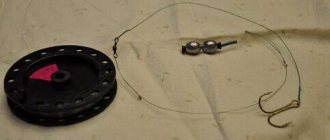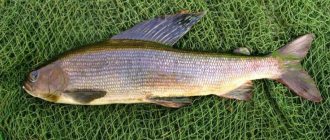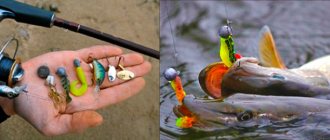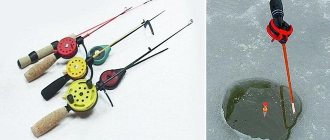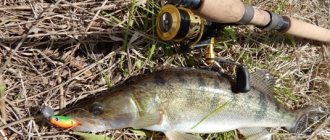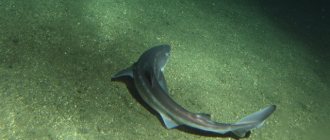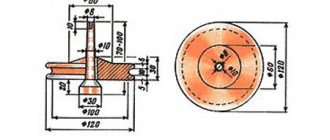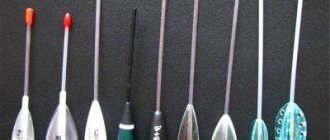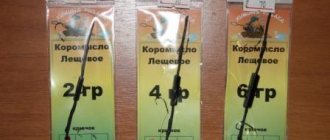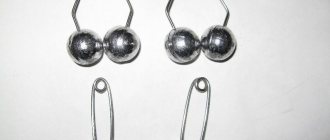The Bolognese fishing rod is one of the most modern and versatile gear.
It appeared in the Italian province of Bologna, where the Reglass factory producing fishing rods is located to this day. Somewhere in the 1980s, telescopic fishing rods made of fiberglass appeared on the shelves of Soviet stores, which changed the understanding of fishing techniques among Soviet amateur fishermen. Although these rods were not from Italy, by their design they gave some ideas about the Bolognese fishing rod.
Features of the tackle
The Bolognese fishing rod consists of the following main elements:
- Glass - or carbon fiber form, 5 to 8 meters long, consisting of several bends, where the coil is structurally provided for.
- The presence of an inertial or inertialess coil. It all depends on the fishing conditions.
- Main line. It can be used as a fishing line.
- Float with blind or sliding fastening.
- Set of sinkers, leash and hook.
The design of the fishing rod can have from 4 to 8 elbows, each of which has a guide ring. The last elbow may have an additional 1-2 rings to distribute the force evenly.
The fishing rod is designed for long casting , although it is a float tackle and can be used for classic fishing. It can be used for fishing at depth and at a distance of up to 30 meters from the shore. To make long casts possible, heavy floats are installed on the fishing rod. They can be attached either rigidly or with the ability to move along the main line.
Bolognese equipment
This equipment is generally as simple as the usual float “ouda”, which has been used for fishing since the time of Sergei Timofeevich Aksakov. But here the version of the float rod is expanded by increasing the casting range, wiring and new fishing techniques. The Bolognese modernized fishing rod kit includes an additional spinning reel and floats with characteristics different from those of a conventional “float”, which will be discussed later. And the rest is all as usual: a rod, a large landing net, bait, a cage and, of course, spare hooks, lines, floats.
How to choose a fishing rod
The rod is selected based on its following characteristics:
- Manufacturing material.
- Maximum length.
- Building.
- Testa.
Modern manufacturers of fishing rods try to ensure that they are strong but light, so they are manufactured using the latest technologies. As a rule, fiberglass is used, which is impregnated with several layers of compound or carbon fiber. Carbon fiber rods are lightweight, while fiberglass rods are more durable. Therefore, you should choose a fishing rod based on the fishing conditions.
If conditions require not letting go of the rod for a long time, then the best option is a carbon fiber blank. If it is possible to install the gear on a stand, then you can choose fiberglass. When fishing from a boat, you do not need a long rod, but when fishing from the shore, the longer it is, the better. For this, rods 6-7 meters long are used.
The action of a rod determines how it can bend. Therefore they are divided into:
- Hard action or fast action, when only the tip of the rod bends.
- Medium-hard action – the upper third of the rod can bend.
- Medium action - the rod bends from the middle.
- Parabolic (slow) action – the ability of the rod to bend along its entire length.
Rods with a hard or medium-hard action are mainly used. This choice allows you to easily carry out various wiring and make timely cuts.
The power of a fishing rod is determined by its test, which depends on many factors, such as the depth of the reservoir, casting distance, etc. Fishing rods with dough from 5 to 20 g are widespread.
When choosing a fishing rod, you should pay attention to the quality of workmanship, both the rod itself and the guide rings . The rings should not have any roughness, otherwise it will be problematic to make long casts. High-quality fishing rods have guides with porcelain liners. The height of the guide ring legs also plays an important role. The higher they are, the less likely it is that the main line will stick to the rod blank.
Choosing a rod and reel for Bolognese fishing
When choosing a rod for Bolognese fishing, you should take into account that the optimal rod would be 6-7 meters long. Shorter ones are used less frequently, since Bolognese fishing is primarily fishing with running equipment. A long rod makes it easier to cast and has better control over the line of the tackle. If the depth at the fishing spot reaches 5-6 meters, then it will be almost impossible to fish without a long rod.
When choosing a fishing rod, you don’t need to skimp too much on quality. When fishing with Bolognese tackle, the rod is in the hand throughout the entire fishing and has to be re-cast. And after two or three hours of Bolognese fishing, every extra gram of the rod will be very noticeable. The use of a light, high-quality rod makes Bolognese fishing comfortable and, most importantly, allows you to perform the retrieve as it should, and not the way it turns out with a cheap stick.
You can use any reel for a Bolognese fishing rod; it does not play a fundamental role. Although, according to many experts, the optimal option would be a match inertia-free machine with a high reeling speed.
Coil selection
For a Bolognese fishing rod, reels that meet the following characteristics are suitable:
- The characteristics of the reel must match the characteristics of the fishing rod.
- The reel spool must hold at least 100 m of fishing line.
- Rear friction brake function available.
- Specific gear ratio.
The Bolognese fishing rod can be equipped with a spinning or inertial reel, but a spinning reel is still more convenient. The size of the reel should be proportional to the size of the fishing rod. Depending on the length of the rod blank, the reel size can be in the range of 1000-4000. If you are using a 7-8 meter long rod, then a size 3500 reel is ideal if the line thickness is within 0.2 mm.
The presence of a rear clutch is necessary only when catching large specimens. With proper adjustment, it will allow you to cope with a large specimen without any problems.
The gear ratio is within 5.7:1. We can say that these are the requirements for choosing a reel for a match fishing rod. This rule is also relevant when equipping a Bolognese fishing rod.
Line selection
To construct a Bolognese fishing rod, it is better to use monofilament or fluorocarbon fishing line with a diameter of 0.14 to 0.22 mm. For fishing where there are no thickets and no algae, you can use fishing lines with a cross-section from 0.14 to 0.18 mm, and in places where there are thickets or snags - fishing line from 0.18 to 0.22 mm. At least 100 meters of fishing line should be wound on the spool. This is necessary so that in the event of a break, the tackle can be quickly repaired. Having this amount of fishing line will allow you to make long casts. It is advisable that the bobbin is filled completely. This will reduce the likelihood of the line catching on the side of the spool while casting.
Techniques and tactics of fishing with a Bolognese fishing rod
Fishing with a Bolognese fishing rod requires special fishing techniques and tactics. It is different in still water and in flowing water:
- When throwing in complementary food in current conditions, you need to correctly calculate the force of water movement. The fertilizer is thrown upstream above the wiring. After casting, the movement of the float is controlled by pulling the fishing line. If a bite occurs, you need to make a short stop. To do this, the line from the rod is pulled, holding the float in the required place. Sometimes the bite occurs at the end of the wiring route. The rig changes its direction and goes against the current. The gear is re-cast every 2 minutes, so this type of fishing is considered labor-intensive.
- Fishing in a still body of water is easier. First, a fishing point is selected, then bait is thrown there. After choosing the depth, the tackle is thrown into the feeding area. When the float antenna disappears under water, make a sharp hook.
If there are strong waves and wind on the reservoir, then the float is weighed down with additional weight.
Float selection
The float in a Bolognese fishing rod plays a very important role. The fish should not see it, but it should be noticeable from a great distance. Moreover, it must be well tuned. It can be attached to the main line either rigidly or with the ability to slide along the line. It all depends on the fishing conditions. Rigid fastening of the float is justified when the fishing depth is at least 1 meter less than the length of the rod.
Basically, floats of the following shapes are used:
- The body of the float is similar to a drop (the body of the float expands from top to bottom).
- Fusiform (the lower part is narrower than the upper part).
- With a flat body (the working surface of the float is similar to a disk).
Drop-shaped floats can be called universal floats. They can be used both in current and in still water. Spindle-shaped floats with hollow antennas have proven themselves when using various types of wiring. Flat, disc-shaped floats are indispensable in strong currents. In bodies of water where there is no current, preference should be given to floats with oblong shapes. During the current, the best functionality is shown by floats with round bite indicators.
In case of long casts, floats with long and thick antennas are required so that they can be observed at a distance of up to 30 meters. For the Bologna rig, floats with a long keel and antenna are used, and in the body, which has a through hole through which the main fishing line is pulled. Such floats can have a weight from 4 to 20 grams and they are selected depending on the fishing conditions. Floats are also used, the weight of which can be changed. Such floats are marked accordingly, for example 8+4. This means that the float weighs 8g, but you can add another 4g to it.
There are two types of Bologna floats:
- With fastening at one point.
- With fastening at two points.
The simpler one is the first type of fastening used when fishing in the current. The float is attached to the underside of the keel. It stays vertical on the water thanks to its good balance. It is easy to cast over long distances.
Advantages of Bolognese tackle
As always, the question arises: why do you need Bolognese tackle, because it bites anyway. Yes, fish bite, and sometimes they are even caught, but it’s not just that bottom (feeder) gear is used for fishing from the bottom, and a fishing rod and reel are used for retrieving.
Fishing with a Bolognese fishing rod - what is its advantage? The most important thing is that float tackle is more sensitive than bottom tackle; the fish does not need to select a leash line and pull on a long main line for the angler to notice the bite. In the float rig of a Bolognese fishing rod, information is transmitted to the fisherman instantly thanks to a stretched thin fishing line and a sensitive element - the float.
Float tackle, unlike a half-bottom, covers a much larger fishing area: the wiring can sometimes be at a distance of several tens of meters, where a large fish may be standing, afraid to come closer.
Fishing with a Bolognese fishing rod is universal; you can fish with a Bolognese rod on rivers ranging from several meters to several kilometers wide, with currents ranging from the weakest to the very strong; and everywhere such fishing will be effective, the main thing is to choose the right equipment.
An indisputable advantage of the Bolognese tackle is the possibility of better use of bait: the fishing point is clearly visible from the location of the float, which means that both feeding and fishing will be much more accurate and efficient. In addition, even very experienced fishermen cannot always accurately guess the location of the bait table in a strong current, since often the balls of bait are not only carried away by the current, but also roll down the slope of the bottom. And the float allows you to accurately and efficiently catch all possible trajectories of food movement. Another point that is often forgotten is the transfer of already washed-out bait downstream. The food is gradually carried away, lingering in uneven bottoms or behind obstacles. Therefore, when fishing at one point, the factor of timely supplementary feeding is very important, in contrast to fishing with a long retrieve, when sometimes it is possible to catch fish on “old yeast” - the remnants of the previous feeding.
Read! Catching silver bream with a float rod
One of the important points in Bolognese fishing is that the bait and feeding methods used by amateur fishermen are quite suitable for it. If athletes often use very heavy food for fishing in the current so that it does not wash out of the fishing sector, then during regular fishing it is possible and even necessary to fish on the feed train. Almost any composition of bulk bait is suitable for feeding (except for the lightest):
- wheat,
- corn,
- peas,
- ground cake and others.
In strong currents, feed is mixed with coastal clay to reduce the rate of erosion.
Loading tackle
Bolognese tackle involves loading the float with either one or several loads. It all depends on what body of water you are fishing on. In standing water, a combined loading system can be used. In this case, 60% of the weight is attached closer to the float, and 40% is divided in half and attached in increments of 20 cm from each other.
If there is a weak current, a chain of pellets is used, located at a distance of 10-15 cm, one after another. In the middle reaches, the pellets are installed almost side by side, at a distance of 70 cm from the leash. If there is a fast current, a sliding type of sinker is suitable.
When properly loaded, only the float antenna should be visible on the surface of the water. In order to carry out loading efficiently, it is better to do this work in advance, at home. Effective fishing largely depends on the correct loading of the gear.
Competent Bolognese fishing tactics
First, you need to decide on the fishing depth, for which you throw a depth gauge-sinker. It is mounted to the hook, and it must exceed the carrying capacity of the float. By moving the bite indicator up or down through the forest, you determine the exact distance from the ground of the reservoir to the surface of the water.
When trying to learn what fishing a Bolognese fishing rod is from A to Z, you need to know its disadvantages - due to the specific arrangement of the pellets, it easily gets tangled. That is why the casting is made smooth, holding the line slightly at the very end so that all the weights are straightened in one line.
Having thrown the equipment, it is released to swim for a while so that it reaches the required fishing point, and a hold is made. Due to delays and pull-ups with the blank, the hook begins to rise above the ground of the reservoir. When the rod is released forward, simultaneously releasing the line, the bait falls to the bottom.
This method of fishing is similar to the behavior of food, which is carried to the shore by the movement of water. Often fishermen try to find out how the master of sports in fishing with a float rod does it by sending requests: fishing Vladimir Vishnyakov Bolognese fishing rod. A big supporter of match rigging, the champion admits that he switches to lap rigs in strong wind currents, using floats with blind installation, which is not possible to achieve with a match.
By the way, if you make a rig called “rat tail”, you can fish on rocky rifts, launching the bait behind a stone with minimal risk of getting hooked. The essence of the “rat tail” is the frequent arrangement of pellets at a distance of five centimeters from each other. Moreover, their number reaches ten or more.
Trying to find out all the secrets of the skill, fishermen want to find out what Bolognese fishing is with Normunds Grabovskis, who not only takes part in various competitions, but writes many articles on specialized topics and films TV shows. There are many videos posted online where he answers questions from his fans.
Leash attachment
It is advisable to use monofilament fishing line or fluorocarbon as a leash, even if the main fishing line is braided. The diameter of the fishing line can vary between 0.12-0.14 mm. It should be remembered that fluorocarbon is not as reliable as fishing line and its diameter may be larger. The length of the leash can vary depending on the conditions and method of fishing. As a rule, the Bolognese tackle has a leash about 60 cm long. When fishing with a wire, it can be shortened to 40 cm.
Autumn with a Bolognese fishing rod
Photo by the author
Autumn fishing tactics are mainly running. You make your way along the river bank and throw the equipment in the places you like. Having found the place where the fish emerge, you use various fishing techniques and select different baits. The choice of nozzle also plays a significant role.
In the fall, there can be many reasons for a bad bite, but you can always irritate the fish’s appetite. A proven method is fishing with wire. When the bait moves near the very bottom, and even lingers at times (the fisherman deliberately stops the movement of the float for a second or two), the fish cannot resist the temptation and will definitely bite. Sometimes, when luring capricious fish, the bait is positioned so that it drags along the bottom on purpose.
To successfully fish by wire, the angler needs to thoroughly navigate the bottom topography in the section of the river where fishing is intended. Another prerequisite is a sharp hook. The fish is hooked at the slightest submergence of the float. They hook not hard, but confidently. At the same time, the float should not fly above the water, as if stung; a skilled fisherman will only barely lift it to determine whether there is a fish on the hook. If you come across something weighty, it is advisable to quickly remove the prey from the fishing zone so as not to scare away the flock.
There are three types of wiring: longitudinal, longitudinal-transverse and mixed. In the first case, the rig is floating freely; in the second, the float is either held or released; in the third - while holding the float, it is also simultaneously pulled towards you. With any type of fishing, the line should always be slightly tensioned; sagging is not allowed, since constant contact between the angler and the bait is important.
In the fall, they are caught in the wire with or without bait. The bait is rolled into balls of such a size that the ball fits freely in the palm of your hand. The balls are thrown in anticipation so that the fishing zone is opposite the angler. In this case, it is necessary to take into account the speed and direction of the flow in this sector of the river. Feeding is carried out at regular intervals throughout the fishing period, in small portions.
Before feeding, you need to decide where the fish is. She can stand at long, medium or close distance. Usually, fishing starts from the farthest zone and with the longest rod, for example, a seven-millimeter rod. If bites are detected closer, they switch to fishing with a shorter rod. Some fishermen reduce the task to gradually luring the fish to more convenient depths for fishing, closer to the shore, and continue fishing with a short fishing rod.
Nozzles
Many fish, when the vegetation dies, stop responding to plant baits, and if they do, they do so capriciously. At this time, the fish feed selectively, mainly on bloodworms and other larvae, as well as worms and adult insects that fall into the reservoir with rainwater. Fish often gather in search of prey near coastal ravines, stream mouths, and ravines, from which a lot of food falls into the water along tributaries or with rain. In addition, worms can end up in the river along with soil collapses - where the current washes away a steep bank. In September-October, in addition to the usual baits: bloodworms, maggots, dung worms and underleaf worms, typical summer baits are sometimes used: caddis larva, dragonfly larva and amphipod. They live in the reservoir and are therefore a common food for roaches. When biting large fish, it is advisable to attach two larvae or two crustaceans at once.
In the rivers of the Volga basin and in many reservoirs, the main food for large roaches is the zebra mussel shell. Colonies of this mollusk settle in the lower part of channel dumps, on the tips of underwater capes, at the base of underwater banks.
It is known that in those reservoirs where roach, carp, bream, and silver bream do not have enough food, these fish attack the fry in the fall. Considering this, you can use fry as a bait. In the Lower Volga, dead fry are sometimes used as bait for fishing for large cyprinids, placing two or three fish on a large hook.
In the fall, good places for fishing can be areas where the fast current turns into a quiet one. Large fish often stand here waiting for food. Favorite areas for bream, large roach, ide, chub, and silver crucian carp at this time are pits with a slow current, located near the edges or under steep banks overgrown with bushes, and deep reaches near the core.
Tackle
For line fishing, a Bolognese type rod is used. It is most convenient to fish with six- to seven-meter rods of lightweight design but fast action. Such a fishing rod must be equipped with high-quality guides. It is better to take a spinning reel, as light as possible, well balanced with the rod.
To guide the float in slow water areas with several pellets, the weight of which gradually decreases towards the hook, and the distance between them increases. This distribution of sinkers makes it possible to quickly and smoothly immerse the entire tackle, making it more sensitive. But where the flow is fast, all the sinkers move to one point closer to the leader. The load concentrated in one place makes it possible for the bait to quickly sink to the bottom in the area of the feeding path or local area where the fish is standing.
Since in autumn white fish stay mainly at depths of up to five meters, it is not necessary to use a sliding rig if the rod is of sufficient length. With a solid float fastening, the bite will be more noticeable.
When fishing, the bait is most often placed near the very bottom, 5-15 cm. It is good to choose for such fishing an area with a slight rise in the bottom at the end of the hook’s movement, which causes the bait to drag. Often ide, roach, bream, not to mention purely bottom-dwelling fish, react precisely at this moment and often with a greedy bite, so you need to vigilantly monitor the uncertain movements of the float.
With bait
In autumn, bait does not always work. There are types of baits for cold water fishing that include a small amount of bloodworms or chopped worms. But they add a lot of sifted coastal soil, which is taken directly from under the turf, because the soil there is fragrant and its smell is attractive to fish. But on established warm days, bait based on plant mixtures is often used. In any case, whatever the bait, it should be laid out in doses. It is undesirable (with the possible exception of coarse crackers) to use large feed particles. In the fall, it is only important to whet the fish’s appetite.
For example, such bait is made on the basis of ordinary food products. Take breadcrumbs - 500 g, just a little oatmeal and cake. Everything is mixed. Add 5 tbsp here. tablespoons of dry daphnia or dried bloodworms (crushed). The presence of feed particles of animal origin is mandatory in the autumn. To make the mixture heavier, crushed dry clay is added. Oatmeal is the optimal binding component for all other components of bait, therefore, the higher the flow speed, the more oatmeal there should be.
As a “savory” addition, fried crushed peanuts, egg powder, and milk powder are added to the bait. Experience shows that the use of different flavors in the fall does not attract roach, silver bream, bream or ide, but only repels them. It is very important to have small bloodworms, maggots or chopped worms in the bait, while their movement at the bottom can additionally attract fish.
When fishing in a current, the balls are made stronger and thrown ahead of time (a little higher upstream). When fishing in slow-moving water, the ball must be of such a consistency that when thrown it does not fall apart in the air, but will crumble when it hits the water.
Alexey Khludov October 2, 2015 at 1:43 pm
Sliding equipment
Bolognese tackle, like any other, can be equipped with a sliding float and a sinker.
The process of assembling a Bolognese fishing rod with a movable float consists of the following steps.
- The reel is attached to the rod using a reel seat.
- The main line is threaded through all the guide rings.
- After this, at least 100 m of fishing line is wound onto the reel spool.
- A supply of fishing line of about 2 meters is made and cut off.
- A rubber or silicone stopper is installed at a distance of 1 m from the end of the fishing line.
- After this, a bead is put on the main line and pulled to the stopper.
- Then the float is attached.
- After the float, a bead is installed.
- The bead is stopped with lead pellets, which are the weight of the tackle.
- A loop is knitted at the end of the fishing line, to which the leash is attached.
- The leash is attached with a clasp and a swivel.
Bait and feeding techniques
The use of Bolognese gear involves the use of feeding mixtures intended for fishing in the current. In this case, you need to select them for a specific type of fish. The consistency of the bait must correspond to the fishing conditions. You can buy bait in fishing stores or prepare it yourself from the appropriate ingredients. For one-time fishing, you need up to 4 kg of bait, adding about 2 kg of clay to it, increasing its viscosity.
Before you start fishing, it is better to check the density of the bait by rolling it into a ball and throwing it into the water. If the ball continues to maintain its shape in the water, then the density of the bait is too high. It will not perform its functions, and you should not count on successful fishing. When they hit the bottom, the balls should scatter, creating a feeding spot or trail. When fishing on a current, you should create a feed trail in order to follow this trail.
At the initial stage, up to 60% of the bait is thrown into the water, and the rest is thrown in during the fishing process.
The bait is delivered to the biting site manually or using devices such as a slingshot, for example. It all depends on the distance from the shore. You may not be able to throw it long distances with your hands.
- If the bait is delivered to the place manually, then balls with a diameter of 50 mm are formed from it and then thrown into the water where needed.
- At long distances, it is better to resort to various tricks, using a slingshot or other device. At the moment, more and more often, fishermen are using radio-controlled models of boats designed specifically for the needs of fishermen.
Loading the float for Bolognese fishing
The classic load for Bolognese fishing consists of a main compact mass of sinkers and individual small pellets - bite alarms. When loading the float, special attention should be paid to ensure that the main sinker is located at a slightly greater distance from the feeder than the length of the leash. In this way, the risk of overlapping equipment is minimized.
The figure shows two loading options: loading a fixed float when fishing at shallow depths (left) and loading a sliding float when fishing over six meters (right). In the sliding version of the installation of the load, 90% of the entire load is located at one point (usually an olive is used).
If in conventional float rigs the main line and the leash are connected in a loop-to-loop manner, then in Bolognese rigs in most cases a swivel is installed between the main line and the leash, which prevents the leash from twisting when the bait is dragged along the bottom.
